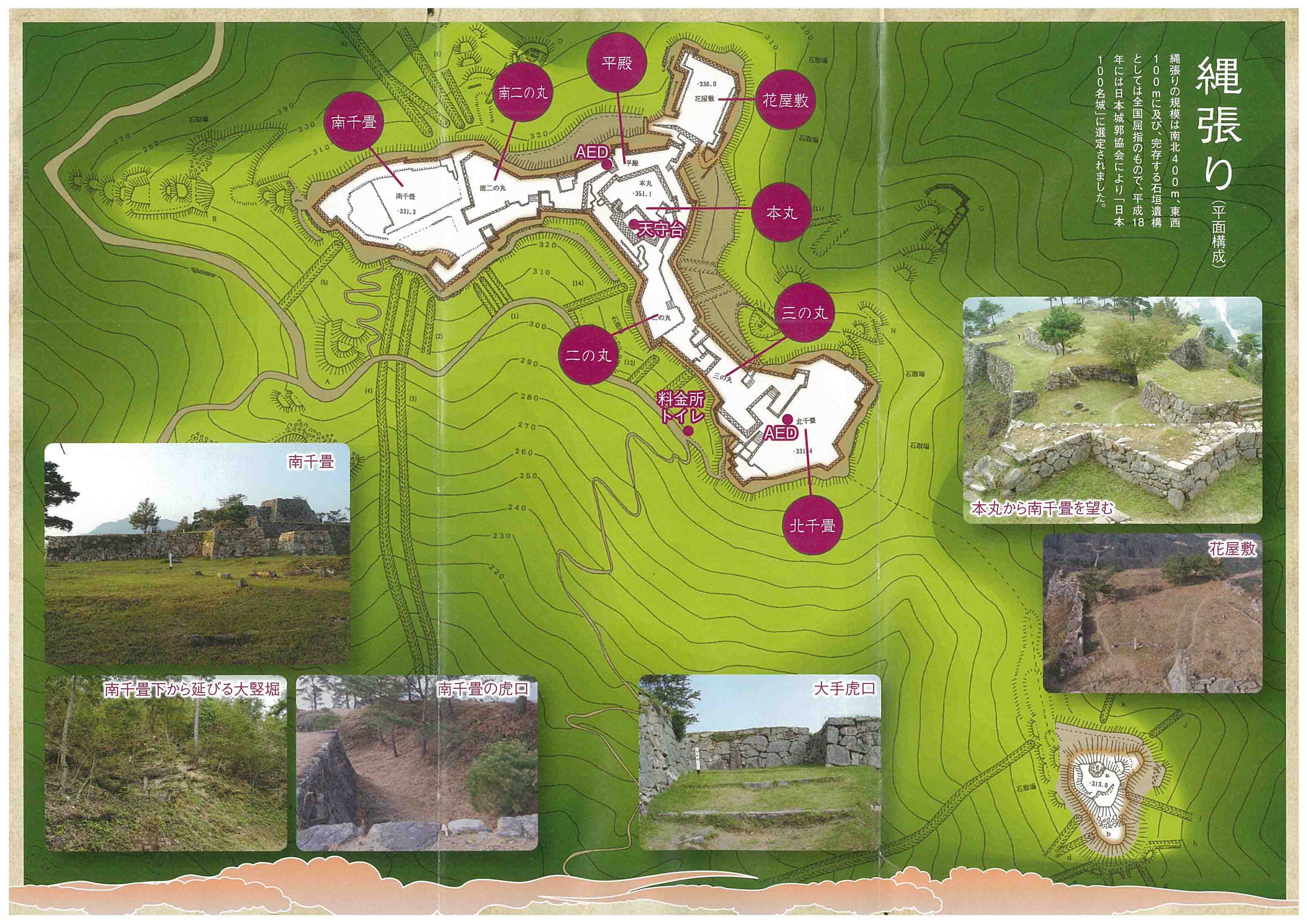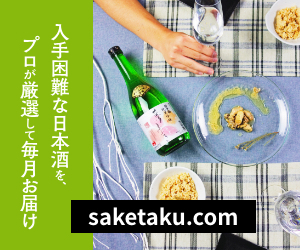- Home
- My Trip Diary
- Minami-Senjo and Takeda Teramachi-street – Go in the Takeda Castle 3
Minami-Senjo and Takeda Teramachi-street – Go in the Takeda Castle 3
- 2018/9/4
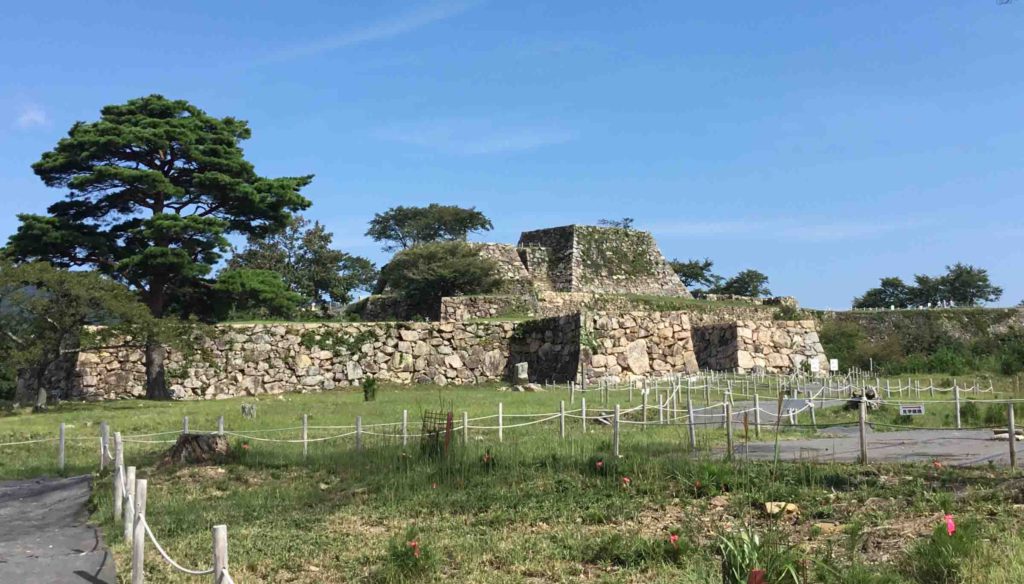
Good evening!
Thank you very much for visiting this blog.
Continued from the previous articles, today is about my trip to Takeda Castle Ruins.
I stopped at when I heard some stories from a tourist guide on Tenshudai (the base of castle’s main tower “Tenshukaku”). This time I get down from Tenshudai and walk on “Minami Senjo” at the south of the castle, and then climb down the mountain.
It is easier to understand my explanation with the map of Takeda Castle’s territory, so I put it below as well as the last time.
Contents
From Honmaru to Minami Senjo
There is a rule of the route to walk in Takeda Castle, and visitors go back to “Ni no Maru” after Tenshudai, and then go to “Minami Senjo” through a narrow space at the west side of the castle (I heard that it’s called “Hiradono”).
To see the map above, indeed, people need to take a detour way to Honmaru from Minami Senjo.
I guess that this is because there was only “Minami Ni no Maru” between Minami Senjo and Honmaru for a defense due to the landform, while “Kita Senjo” had solid shields of Otemon, San no Maru, and Ni no Maru between, so the people had to build stonewalls and so on in the case of Minami Senjo to make the way to Honmaru longer.
We can see the work of the architects here.
Now, let’s go down from Tenshudai and go to Minami Senjo next.
When you see Tenshudai from the top, you can see that Tenshudai is quite high.
After climbing down, you see a range of stonewalls towards the mountain, and this is Minami Senjo.
As I mentioned, the visitors cannot go to Minami Senjo directly from Honmaru, so I went to Ni no Maru first.
Here, the camera goes through a place called “Hiradono” which leads to Minami Senjo.
In the middle of the movie, you see a part of a flat area beneath a stonewall.
This area is called “Hana Yashiki” which is a district for the defense of the castle’s west side.
Unfortunately, the visitors couldn’t go into this area when I visited.
In the very last part of the movie, you see a box.
This box is “AED” in the map.
This is the movie of “Minami Ni no Maru”.
In the first part of the movie, you see a wall like a turret.
The map shows that the offence side have no other choice than going through the beneath of Honmaru to get to the center.
Once they come to this area, they get an intensive attack from three sides around them.
In the last part of the movie, the path gets narrower and narrower by stone wall of Minami Ni no Maru on the right side and stone wall where a turret is seemed have to be built on the left side.
Where to place a turret decides how hard the enemy can break through into the center.
Minami Senjo
Over this path is Minami Senjo.
It looks wider than Kita Senjo as there are less trees.
The camera looks back to Honmaru in the last part, and before turning back, you see a white thick line on the valley. This is Maruyama River.
On the right, the white line at the foot of mountains is “Bantan highway”.
Going on the highway, you will come to Himeji.
Takeda Castle got broken down in 1577 by the army of Hidenaga Hashiba (Toyotomi), who was the younger brother of Hideyoshi Hashiba (Toyotomi) from Himeji Castle.
The Hashiba army should have entered from this direction (south), so it’s emotive when I imagine that the Takeda Castle’s soldiers at that time also saw this direction as I do and found the enemy.
This movie starts from the south edge of Minami Senjo, and goes toward Honmaru.
You can see that it is not easy to go into the deep area of the castle because of Minami Senjo through Minami Ni no Maru, and stone wall where a turret is seemed have to be built at the right.
The higher stonewall in the back of the screen is Tenshudai, and stonewalls continue to it.
The range of the walls is overpowering when you see it in this way, and I imagine that the invaders lost their intention here.
When I was climbing up this castle, I wondered how this castle was broken down through such strategic walls while only walking up to this place is already so hard.
The stonewalls of Takeda Castle is “Ano Zumi” which is a technique of a technician group called “Ano Shu”, and this is often seen in castles which are related to the military of Oda and Toyotomi.
Therefore, it can be imagined that these “Ano Zumi” walls were not here when Hidenaga Hashiba attacked this castle.
The basic structure and property were not so different from what we see now though, so I was surprised by Hidenaga’s winning.
And then, to the exit.
Takeda Teramachi Dori
After the exit, the path becomes a mountain trail again.
If you go down for a while,

You arrive at this “Hyomai Shrine”.
This shrine deifies the son of Emperor Kotoku, Prince Hyomai, who beat back the attack of Shiragi (Korea in the 7 to 10 century).
What is interesting is that this shrine has a sumo ring and audience seats (something looking like them).

It is said to be because Prince Hyomai loved sumo.
Going through the torii (gate of a shrine) and turn left,
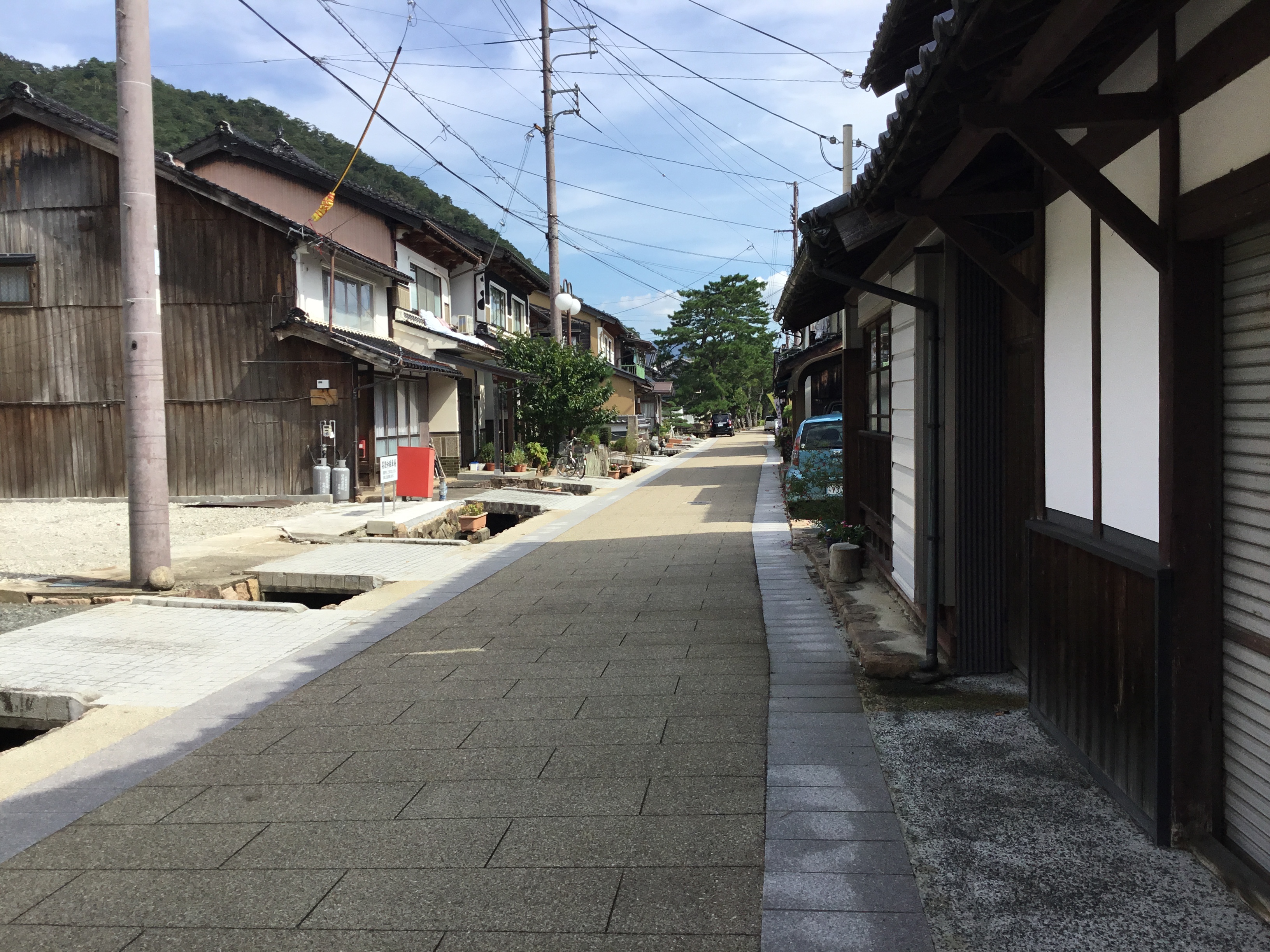
There is “Takeda Teramachi Dori”, and this is the street where the castle’s entrance is.
There is a grade crossing near torii, and crossing the railroad is a short cut to the parking area.
However, I took the longer way because I wanted to see a good house with earthen walls which I showed you in the last time before.
On the way,
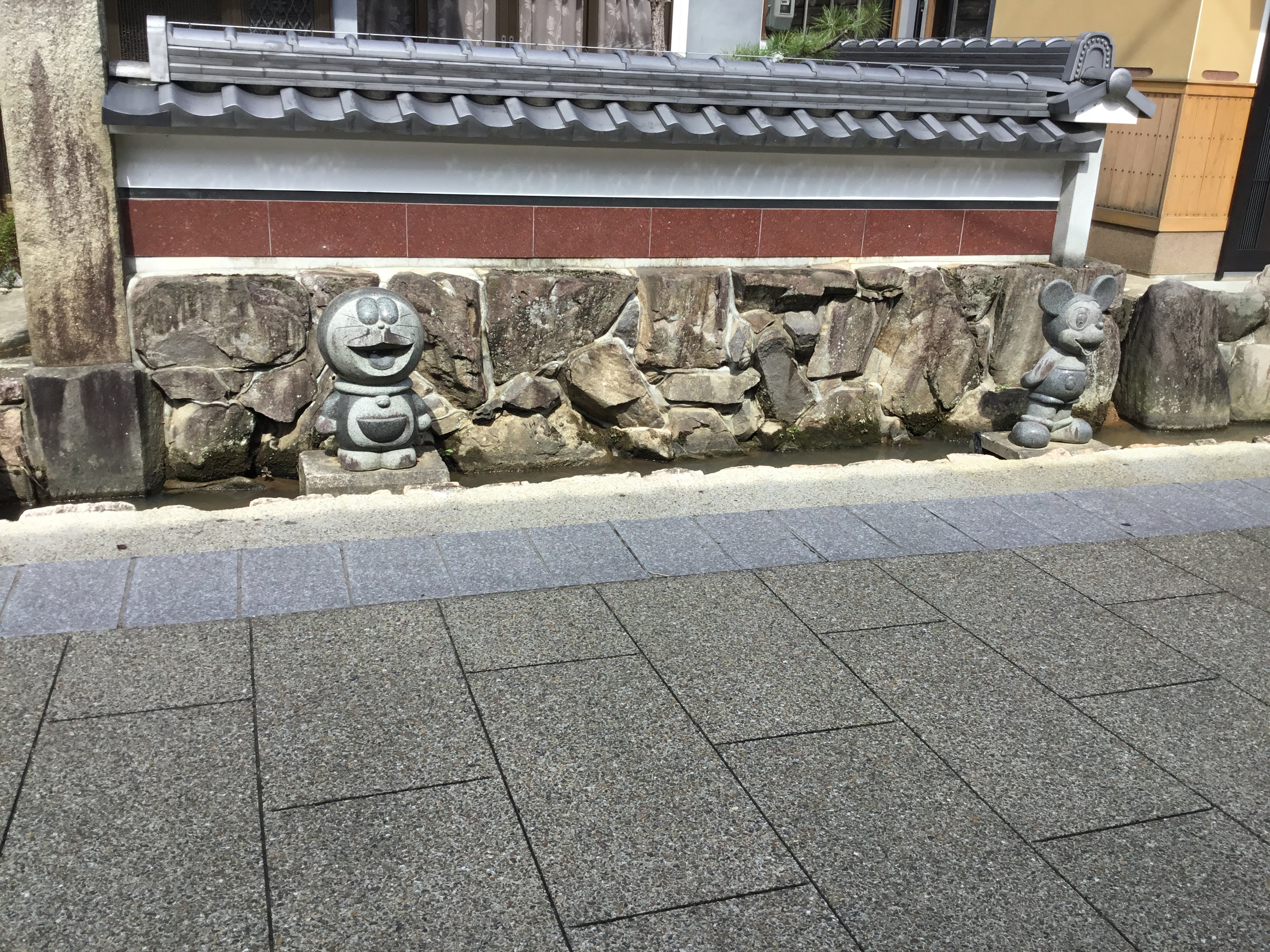
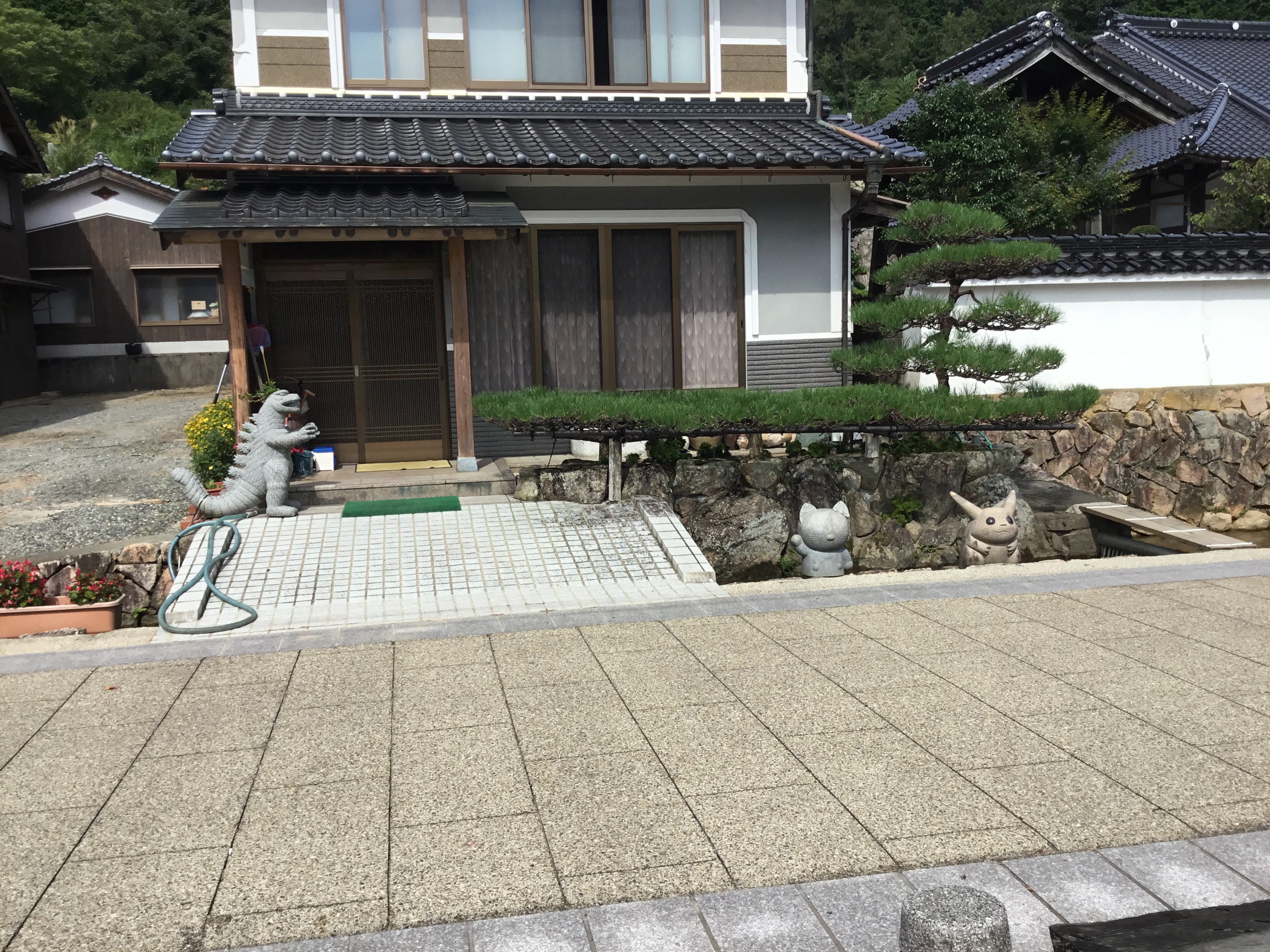
I met some famous characters (I’m worried about being charged a huge copyright fee if I don’t mosaic the American mouse ^^;).
The beautiful building of white walls at the right of Pi*achu is
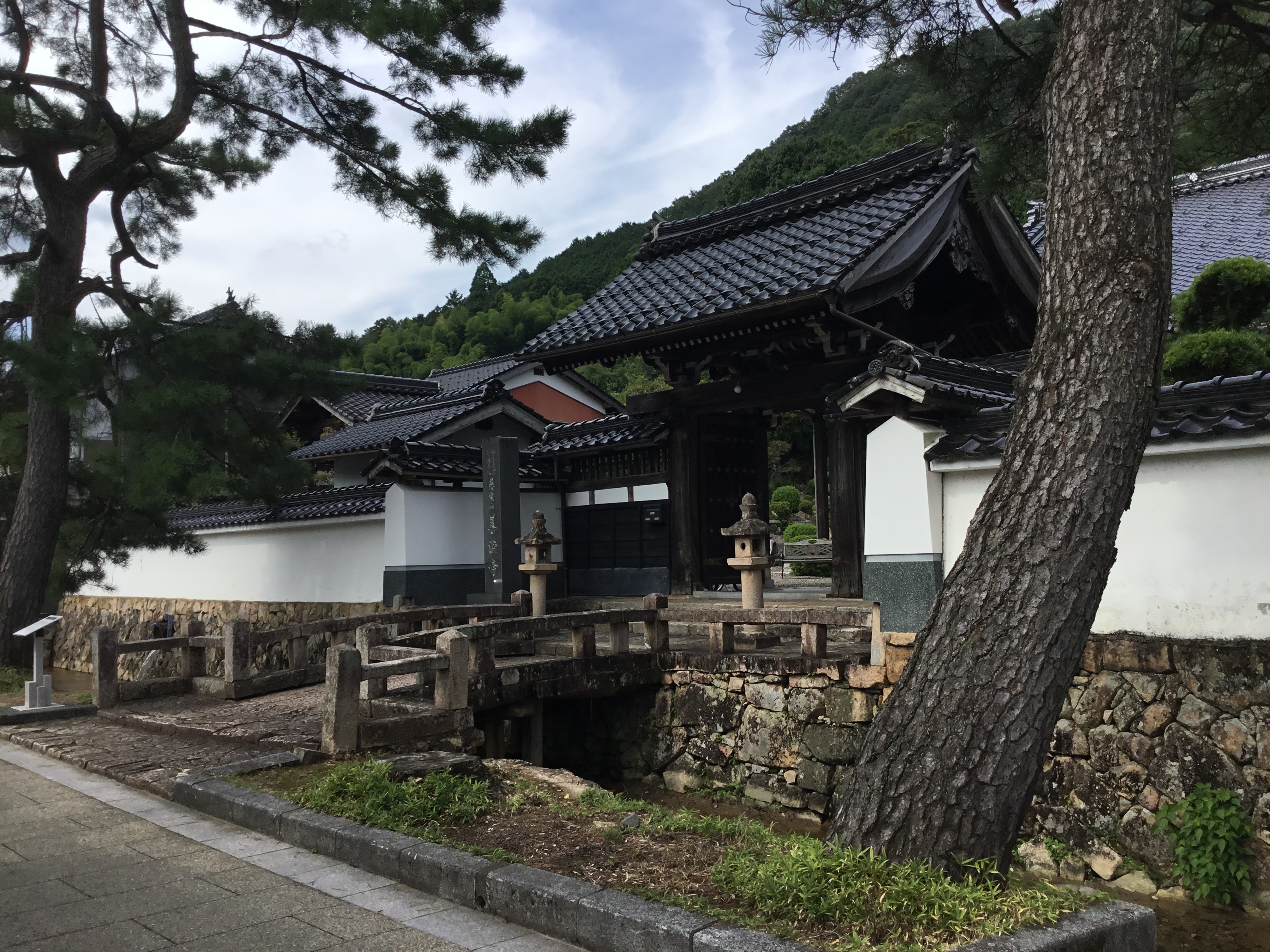
A temple called “Zenshoji”.
From Zenshoji Temple, fine walls start and continue.
Next to Zenshoji Temple,
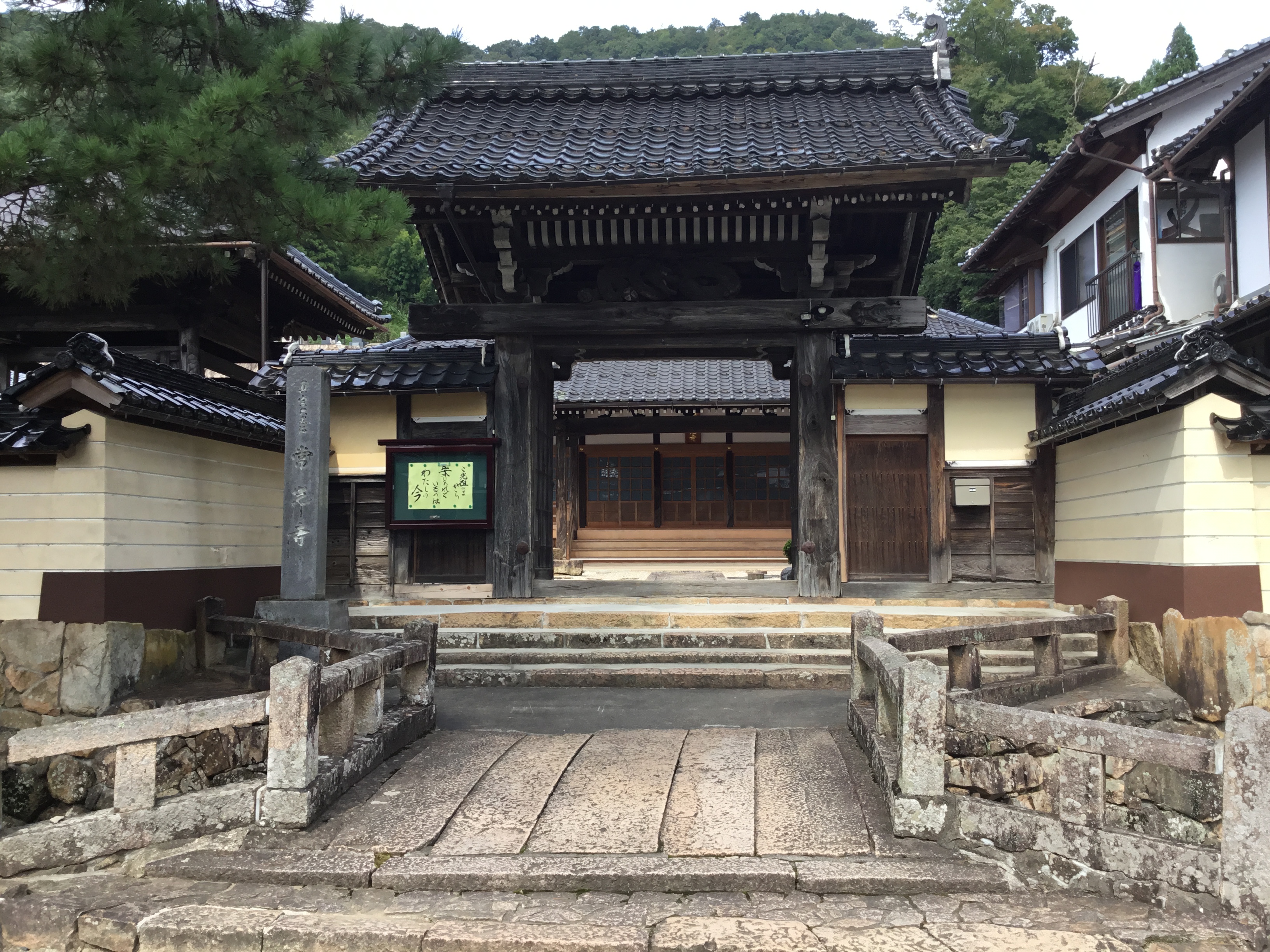
There is “Jokoji” Temple.
This temple is to enshrine the ancestors of Mitsukage Otagaki who was Takeda Castle’s first lord and a retainer of Sozen Yamana (one of the leaders of Onin War).
Next to Jokoji Temple,
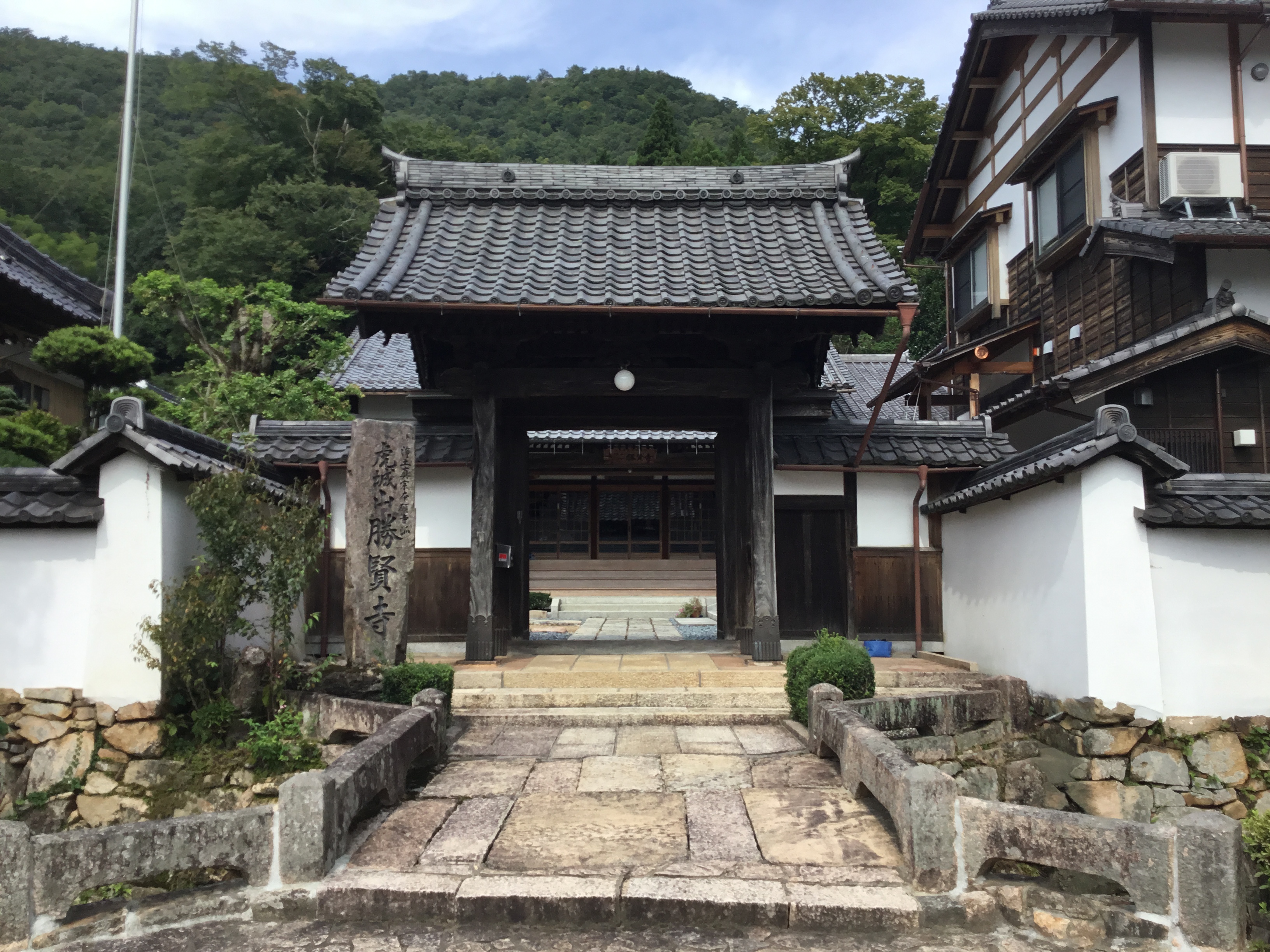
“Shokenji” Temple.
I mentioned that Takeda Castle was broken down by Hidenaga Hashiba once, but after that, the Mori family came and occupied the castle.
In 1580, Hidenaga Hashiba came back again to attack Mori and won back the castle.
Hidenaga placed Shigeharu Kuwayama as the lord of Takeda Castle.
Shokenji Temple hold memorial services for Shigeharu’s elder son and his wife.
Next to Shokenji Temple,
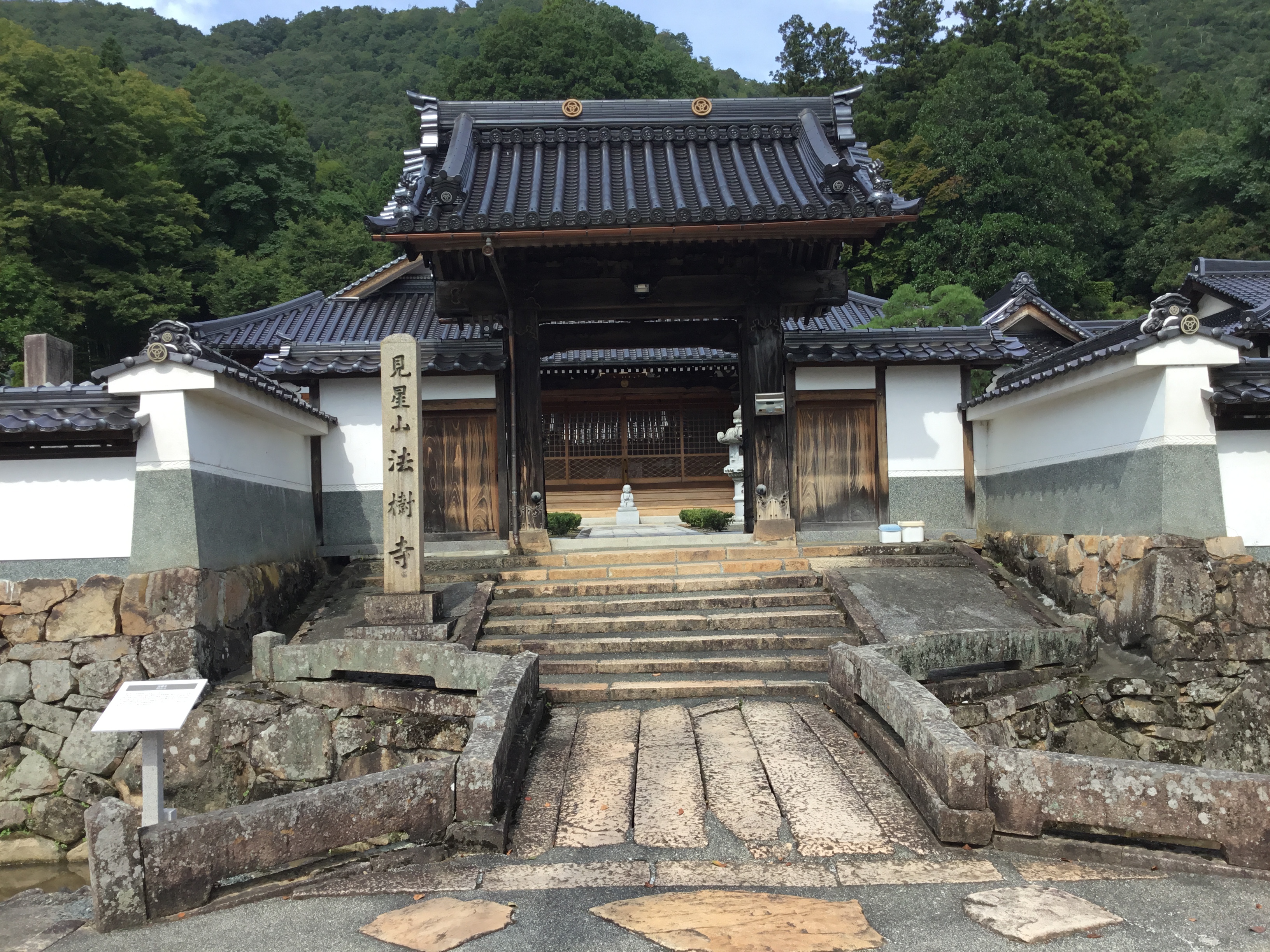
“Hojuji” Temple.
This temple is the family temple of Hirohide Akamatsu to deity his ancestors, and there is a tombstone in the back of the temple’s property.
It is said that there used to be Hirohide’s residence here.
In the case of a mountain castle like Takeda Castle, the lords had their residences at the foot of the mountain and they lived there in usual time. They came to the castle at wars to fight.
I can understand it because living at the top of a mountain is not very convenient.
As I mentioned in the last blog, Takeda Castle became the style like we see now in the time of Hirohide Akamatsu.
He did his best to do good politics for citizens, so the people respected him and the castle was kept in good condition by the local people for hundreds of years.
Hirohide joined the Toyotomi armies in the Battle of Sekigahara.
He went to attack Tanabe Castle in Maizuru which is the next city of Miyazu City where “Amano Hashidate” locates.
After Toyotomi armies were defeated by Ieyasu Tokugawa in Sekigarahara, he was invited to theTokugawa armies by Korenori Kamei.
Hirohide joined it and attacked Tottori Castle.
In this battle, a fire occurred in the town beneath the castle.
Hirohide was forced to take the responsibility of the fire, and he killed himself with harakiri under the order of Ieyasu Tokugawa.
After Hirohide’s death, Takeda Castle was demolished.
The buildings such as turrets were broken up, and it became the present appearance with stonewalls only.
This is all about my trip to Takeda Castle.
Unexpectedly, this story finished in a good order with Takeda Castle at last.
Today is the final one of 4 articles. Takeda Castle was just so good.
The view of Takeda Castle in the cloud sea made the nickname of “Castle in the Sky”.
Meanwhile, ranges of stonewalls made people to call it “Machu Picchu of Japan”.
The stonewalls were placed to reinforce the castle’s function, and the architects used the best of the nature landscape to do it.
The combination of the nature and human works created this grant sight seen in photos and movies.
In addition, the tight relationship between the lords and local people have kept this beautiful structure, and thanks to that, we can still see the ruins now.
I think that Takeda Castle moves people’s mind because it has 3 elements of the nature, technology, and the hearts of people.
I recommend you to visit Takeda Castle if you have chance.
If you have the chance, please remember some information from my blog, and you should enjoy the castle more than when you visit without any information.
Takeda Castle was definitely the best memory of whole of this trip.
It's our great pleasure if this article is helpful for you.
Restaurant Information
| Shop Name | |
|---|---|
| Prefectures | - |
| Tel | |
| Address | |
| Nearest Station | |
| Homepage | - |
| Business Hours | - |
| Holiday | |
| Introduction | |
| Sake List |
|


